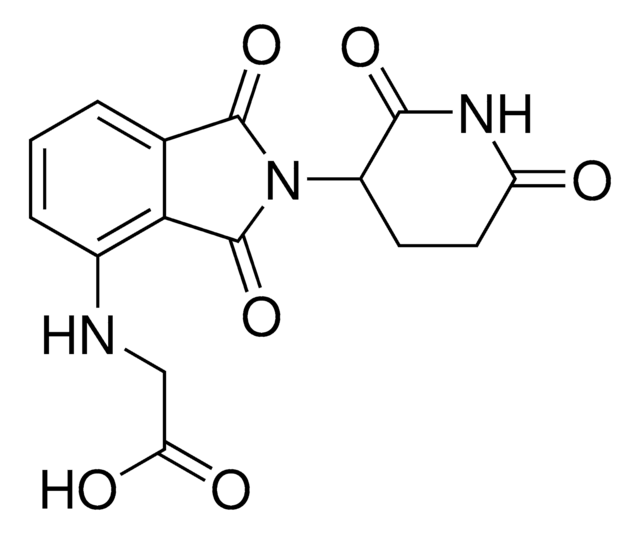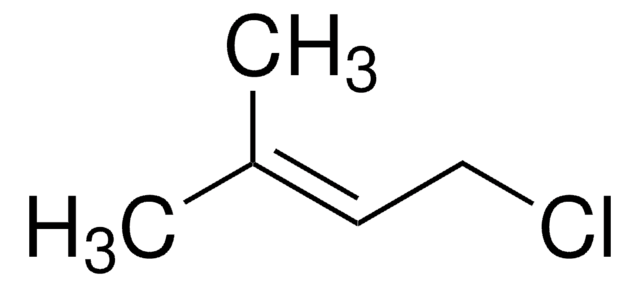추천 제품
생물학적 소스
rabbit
Quality Level
항체 형태
serum
항체 생산 유형
primary antibodies
클론
polyclonal
종 반응성
bovine, human
기술
western blot: suitable
배송 상태
ambient
타겟 번역 후 변형
unmodified
일반 설명
Reactive aldehydes generated during lipid peroxidation contribute to cell and tissue damage associated with oxidative stress. Alpha,beta-unsaturated carbonyl compounds such as 4-hydroxy-2-nonenal (HNE), 4-oxo-2-nonenal (ONE), and acrolein, generated from oxidation of polyunsaturated fatty acids (PUFAs), readily interact with nucleophilic groups on proteins, leading to intramolecular or intermolecular protein crosslinking. Two types of HNE modifications exist, the first type is formed by a 1:1 Michael adduct reaction with lysine amine, histine imidazole, or cysteine sulfhydryl, while the second type is produced by one HNE reacting simultaneously with two free amine groups from two N-alpha-acetyllysines (NALs), so-called Michael-Schiff base adduct. In the latter case, the initial nonfluorescent 2:1 lysine-HNE Michael adduct-Schiff base further undergoes oxidative cyclization to form a fluorescent 2-hydroxy-3-imino-1,2-dihydropyrrol derivative commonly referred to as HNE fluorophore. Reversibly formed HNE-Lys Michael adduct is not stable and reduction by sodium borohydride (NaBH4) is often employed to preserve Lys HNE mofidication in protein samples. Reductive stabilization by NaBH4 treatment is also used to prevent 4-HNE loss from 4-HNE-Cys Michael adduct by retro-Michael addition reaction (RMA) during collision-induced dissociation (CID) and electron transfer dissociation (ETD) MS/MS.
특이성
Target modification is not species-specific.
This polyclonal antiserum detected HNE-modified BSA only after, but not before, reduction by sodium borohydride.
면역원
HNE-modifed KLH chemically reduced by sodium borohydride.
애플리케이션
Anti-HNE Michael Adducts Antibody, Reduced, Cat. No. ABN249, is a highly specific rabbit polyclonal antibody that targets the reduced form of 4-Hydroxy-2-noneal Michael adducts and has been tested in Western Blotting.
Application Notes:
1. ABN249 replaces Calbiochem 393207. ABN249 is expected to work in immunocytochemistry and immunohistochemistry. Please refer to the following 393207 citations as examples of sample preparations and detection in these two types of applications:
Usatyuk, P.V., et al. (2006). J. Biol. Chem. 281(46):35554-35566 (Immunocytochemistry).
McCormack, A.L., et al. (2005). J. Neurochem. 93(4):1030-1037 (Immunohistochemistry).
2. Anti-HNE Fluorophore, Cat. No. 393206, is also available for the detection of HNE Fluorophore by ELISA, Immunohistochemistry, and Western blotting.
3. To generate a positive control for Western blotting, treat a 2 mg/mL BSA solution in 10 mM KH2PO4, pH 7.4, with 0.1 to 0.5 mM HNE and incubate for 1 hr at 37°C. The reaction can be monitored by the decrease of HNE absorbance at 224 nm (extinction coefficient 13,750/M). Free HNE can be removed by gel filtration and dialysis following the chemical reaction.
HNE Michael adducts in protein solutions must be chemically reduced by sodium borohydride (NaBH4) prior to analysis using ABN1348. A freshly prepared 100 mM NaBH4 solution in 1 mM NaOH is added 1:9 (V:V) to the protein sample solution to a final NaBH4 concentration of 10 mM. The protein solution is kept at room temperature for 10 to 30 min prior to quenching with the addition of 5 to 10 molar equivalents of acetone.
1. ABN249 replaces Calbiochem 393207. ABN249 is expected to work in immunocytochemistry and immunohistochemistry. Please refer to the following 393207 citations as examples of sample preparations and detection in these two types of applications:
Usatyuk, P.V., et al. (2006). J. Biol. Chem. 281(46):35554-35566 (Immunocytochemistry).
McCormack, A.L., et al. (2005). J. Neurochem. 93(4):1030-1037 (Immunohistochemistry).
2. Anti-HNE Fluorophore, Cat. No. 393206, is also available for the detection of HNE Fluorophore by ELISA, Immunohistochemistry, and Western blotting.
3. To generate a positive control for Western blotting, treat a 2 mg/mL BSA solution in 10 mM KH2PO4, pH 7.4, with 0.1 to 0.5 mM HNE and incubate for 1 hr at 37°C. The reaction can be monitored by the decrease of HNE absorbance at 224 nm (extinction coefficient 13,750/M). Free HNE can be removed by gel filtration and dialysis following the chemical reaction.
HNE Michael adducts in protein solutions must be chemically reduced by sodium borohydride (NaBH4) prior to analysis using ABN1348. A freshly prepared 100 mM NaBH4 solution in 1 mM NaOH is added 1:9 (V:V) to the protein sample solution to a final NaBH4 concentration of 10 mM. The protein solution is kept at room temperature for 10 to 30 min prior to quenching with the addition of 5 to 10 molar equivalents of acetone.
품질
Evaluated by Western Blotting in Reduced HNE-BSA.
Western Blotting Analysis: A 1:10,000 of this antibody detected 10 ng of HNE-modified BSA only after, but not before, reduction by sodium borohydride.
Western Blotting Analysis: A 1:10,000 of this antibody detected 10 ng of HNE-modified BSA only after, but not before, reduction by sodium borohydride.
표적 설명
Variable depending on the size(s) of the HNE-modified protein(s). Uncharacterized bands may be observed in some lysate(s).
결합
Replaces: Calbiochem 393207
분석 메모
Control
HNE-modifed BSA chemically reduced by sodium borohydride.
HNE-modifed BSA chemically reduced by sodium borohydride.
기타 정보
Concentration: Please refer to lot specific datasheet.
적합한 제품을 찾을 수 없으신가요?
당사의 제품 선택기 도구.을(를) 시도해 보세요.
Storage Class Code
12 - Non Combustible Liquids
WGK
WGK 1
Flash Point (°F)
Not applicable
Flash Point (°C)
Not applicable
시험 성적서(COA)
제품의 로트/배치 번호를 입력하여 시험 성적서(COA)을 검색하십시오. 로트 및 배치 번호는 제품 라벨에 있는 ‘로트’ 또는 ‘배치’라는 용어 뒤에서 찾을 수 있습니다.
Bipradas Roy et al.
Toxics, 10(6) (2022-06-24)
Exposure to environmental pollutants, including dioxin-like polychlorinated biphenyls (PCBs), play an important role in vascular inflammation and cardiometabolic diseases (CMDs) by inducing oxidative stress. Earlier, we demonstrated that oxidative stress-mediated lipid peroxidation derived 4-hydroxy-2-nonenal (4HNE) contributes to CMDs by decreasing
Xinzhu Wang et al.
Scientific reports, 9(1), 16238-16238 (2019-11-09)
Protein interactions of Tau are of interest in efforts to decipher pathogenesis in Alzheimer's disease, a subset of frontotemporal dementias, and other tauopathies. We CRISPR-Cas9 edited two human cell lines to generate broadly adaptable models for neurodegeneration research. We applied
자사의 과학자팀은 생명 과학, 재료 과학, 화학 합성, 크로마토그래피, 분석 및 기타 많은 영역을 포함한 모든 과학 분야에 경험이 있습니다..
고객지원팀으로 연락바랍니다.






